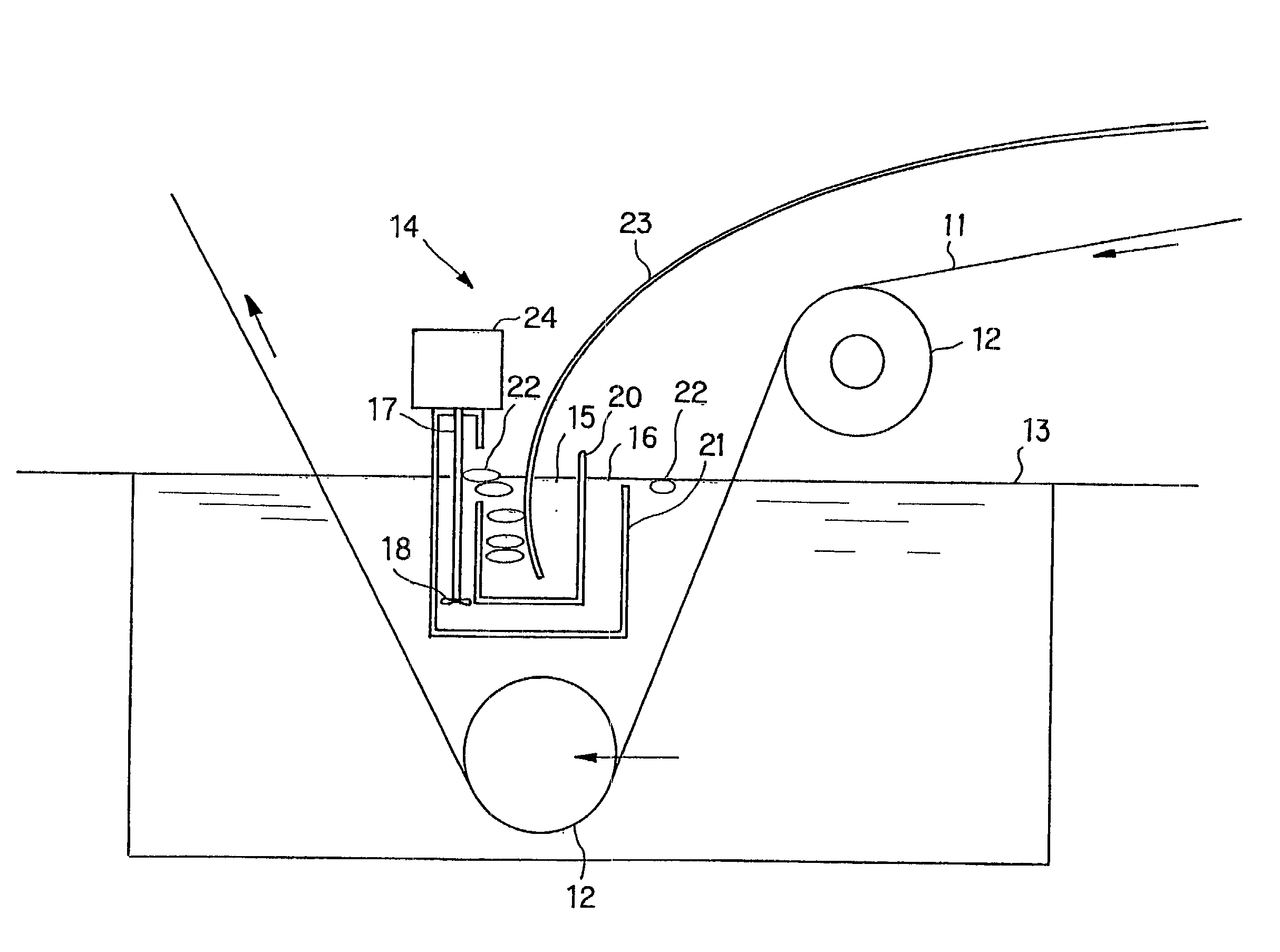Aluminum-
zinc alloys, SUS and other various alloys are used as jigs for molten metal, but since they are used at high temperatures, the life thereof is short, namely, about one week.
Therefore, they must be frequently changed, and the changing operation at high temperature is very difficult.
However, when the materials to be plated are repeatedly dipped, impurities in the molten metal grow in the form of particles to cause formation of
solid suspended materials (
dross) in the molten metal.
If the plating is continued as it is, plating thickness becomes uneven or appearance of the plated articles becomes poor.
Under the circumstances,
silicon nitride or
silicon carbide materials which are excellent in
heat resistance and high in strength have hitherto been used as sliding materials, but these have a great
kinetic coefficient of friction of 0.5-1.0 and are apt to cause wear of another materials and are not necessarily suitable as sliding materials.
In addition, they are high in density and have the defects of consuming a great energy for driving together with the great
kinetic coefficient of friction.
Moreover, they have a defect of
brittleness as peculiar property, and are considerably brittle even due to small flaws and, besides, have no sufficient strength against thermal and mechanical shocks.
Therefore, in the case of braking devices using C / C composites as friction materials, the friction materials are exposed to high temperatures in the air for a long time.
Accordingly, since friction materials using C / C composites are basically mainly composed of
carbon fibers which readily burn at high temperatures, the carbon fibers react with
oxygen under such conditions of being exposed to high temperatures for a long time to cause considerable wear or emission of
smoke, leading to serious accidents.
However, from the points of
friction force at high temperatures and flexibility needed in fitting to disk brakes, substitutes therefor have not yet been discovered.
This is impregnated with metallic silicon, but it is very difficult owing to the random presence of the pores to uniformly impregnate the whole of the fired body with silicon.
As a result, there is caused the problems that the carbon fibers become short fibers at the portion of SiC layer being formed in at least a part of the
composite material, resulting in deterioration of
impact resistance,
flexural strength, high
lubrication and abrasion resistance.
Since C / C composites are high in tenacity, they are superior as braking members because of their excellent
impact resistance, light weight and high
hardness, but they are composed of carbon and hence cannot be used at high temperatures in the Presence of
oxygen and have a limit in the use as
refractory sliding materials.
Moreover, since they are relatively low in
hardness and in compression strength, abrasion wear is large when used as sliding materials or braking members.
On the other hand,
SiC fiber-reinforced Si-SiC composites are excellent in oxidation resistance and
creep resistance, but are apt to be flawed on the
fiber surface.
Thus, they are inferior to C / C composites in tenacity, and therefore low in
impact resistance and are not suitable for sliding materials having complicated shapes or having
thin wall portion, such as bearings and sliders.
Furthermore, they lack reliability for materials
usable for a long time as jigs for molten metal used at high temperatures.
Thus, materials high in reliability and
usable for a long period of time have not yet been provided.
Furthermore, if the material constituting the molten metal pump bleeds into the molten metal, quality of the plated articles is affected; and so there must be used materials which do not bleed out at high temperatures.
SIALON now used for the portions of molten metal pump which require oxidation resistance has no problem in oxidation resistance, but is inferior in
thermal impact resistance, and, for example, when it is used at 800.degree. C. for 100 hours, cracks occur at the portions in the vicinity of the surface of the molten metal.
Control of the carbon concentration to less than 0.01 mol % is not practical because strict metering of the amount of the added metallic silicon is required in relation with the amount of free carbon in the C / C composite, and control of temperature at the final step mentioned hereinafter becomes complicated.
If the thickness of the matrix layer is less than 0.01 mm, endurance required, for example, for sliding materials under high oxidizing conditions cannot be obtained.
If the content is less than 0.1% by weight, the effect of imparting
lubricity by
boron nitride cannot be sufficiently obtained, and if it is more than 40% by weight, the
brittleness of
boron nitride appears also in the SiC-C / C composite material.
If the open pore content is less than 5%, the binder in the molded body or fired body cannot be completely removed, and if it is more than 50%, the SiC material impregnates deeply into the skeletal part to cause deterioration of
impact resistance of the composite material.
 Login to View More
Login to View More 


